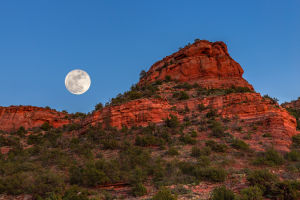Nestled against the backdrop of the towering Teton Range, the rustic barns of Grand Teton National Park provide a captivating glimpse into the past.
For Lykkers eager to explore natural beauty and history intertwined, this destination offers the perfect combination of scenic landscapes and cultural heritage.
The contrast between the sturdy wooden barns and the dramatic snow-capped peaks creates a visual that leaves visitors awestruck and eager to capture the moment.
Discovering the Iconic Moulton Barns
The barns in Mormon Row Historic District are some of the most photographed structures in Grand Teton National Park. These historic homesteads, including the famous T.A. Moulton Barn, were built by Mormon settlers in the late 19th century. Today, they stand as a testament to the pioneering spirit of the families who lived and worked here.
While the barns were constructed for practical purposes—sheltering animals and storing hay—they are now beloved for their rugged charm. The wooden structures, weathered by time and the elements, are surrounded by wide, open fields with the jagged Tetons rising in the background, making this one of the most iconic views in the American West.
How to Get There
Grand Teton National Park is located in northwestern Wyoming, and it is easily accessible by car.
By Car: The park is about a 5-hour drive from Salt Lake City and a 1-hour drive south from Yellowstone National Park. The Mormon Row Historic District is located near the town of Jackson, Wyoming, just off Antelope Flats Road. Parking is available at several designated areas near the barns.
Public Transport: While public transport options within the park are limited, the town of Jackson offers shuttle services that can bring you closer to the park’s attractions. However, renting a car is highly recommended to explore at your own pace.
Entry Fees and Open Hours
Entry Fee: A 7-day pass for Grand Teton National Park costs $35 per vehicle, $20 per person on foot or bike, and $30 for motorcyclists. If you're planning to explore both Grand Teton and Yellowstone, you can purchase a combined pass for $70, which provides access to both parks for 7 days.
Opening Hours: The park is open year-round, but the best time to visit is between May and September, when the weather is milder and more facilities are operational. While you can visit the barns at any time, early mornings and late afternoons offer the best lighting for photography, and you'll likely encounter fewer crowds.
What to Do
Grand Teton National Park offers a wide array of activities for visitors looking to experience the beauty of the area:
Photography: The Moulton Barns are a photographer’s dream. With the Tetons in the background and the barns in the foreground, it's nearly impossible to take a bad photo. The early morning light, just after sunrise, casts a golden glow over the scene, enhancing the rustic charm of the barns. Don’t forget to bring a wide-angle lens to capture the full scope of the scenery.
Scenic Drives: After visiting the Mormon Row barns, consider taking a scenic drive through the park. Teton Park Road offers incredible views of the mountains and numerous pullouts where you can stop and take in the sights. If you’re lucky, you may spot wildlife such as deer, elk, or even moose along the way.
Hiking: For those who enjoy hiking, the park offers trails of varying difficulty levels. One of the most popular is the Jenny Lake Loop, a 7.1-mile hike that offers stunning views of both the lake and the Teton Range. For more experienced hikers, the Cascade Canyon Trail provides a more challenging adventure, with incredible views of towering cliffs and alpine terrain.
Wildlife Watching: Grand Teton National Park is home to a diverse array of wildlife. Elk, deer, moose, and even bears roam the park’s valleys. Early morning and late evening are the best times to spot animals, so consider planning your visit around these hours. Remember to maintain a safe distance from wildlife and follow park regulations to ensure both your safety and the safety of the animals.
Local Tips for Lykkers
Best Time for Photos: The barns look particularly stunning in the early morning when the sunlight is soft and the Tetons are bathed in a warm glow. Visiting at dawn also allows you to beat the crowds and enjoy the tranquility of the area.
What to Bring: Be sure to pack water, sunscreen, a hat, and comfortable walking shoes. Even if you're only planning to stop for photos, the terrain can be uneven, and the sun can be strong during the summer months. Bringing layers is also a good idea, as the weather in the park can change quickly, especially in the mornings and evenings.
Respect the History: While the barns are wonderful to photograph, remember that they are also historical structures. Avoid climbing on or touching the buildings to help preserve them for future generations.
GRAND TETON NATIONAL PARK (2023) | 7 Best Things To Do In The Grand Tetons + Travel Tips
video by World Wild Hearts
Conclusion
The combination of history, scenic beauty, and the grandeur of the Teton Range makes a visit to Grand Teton National Park’s Mormon Row Historic District an experience that will stay with you long after you leave. For Lykkers looking to connect with nature while stepping back into the history of the American West, this destination offers a perfect escape. Whether you're photographing the iconic Moulton Barns or exploring the park’s numerous trails and wildlife, Grand Teton National Park is a must-visit for anyone who appreciates the beauty of the great outdoors.


